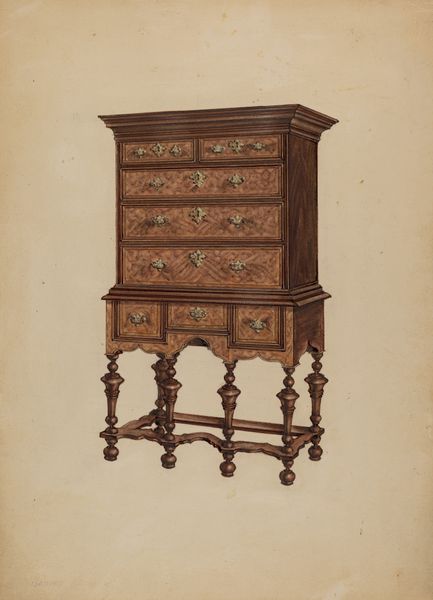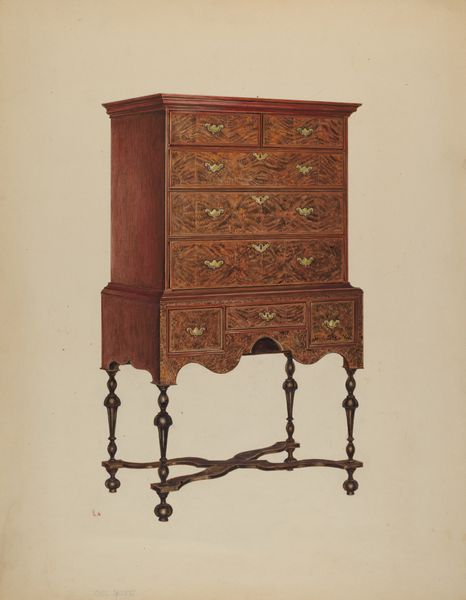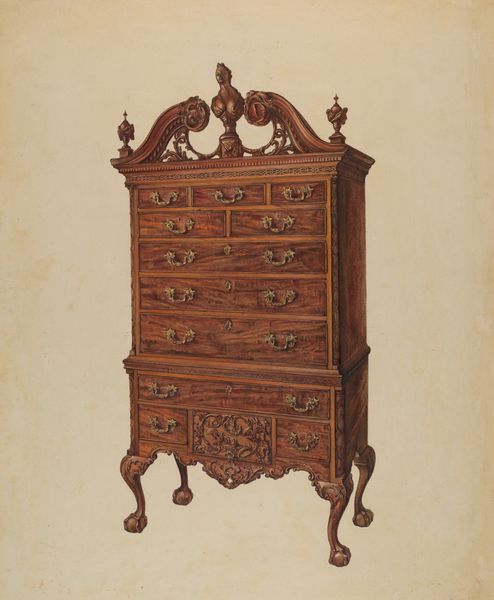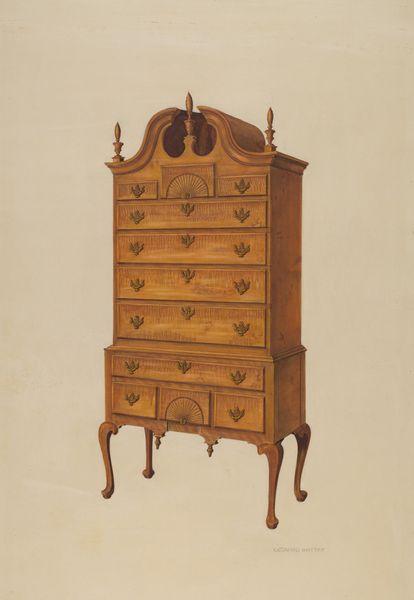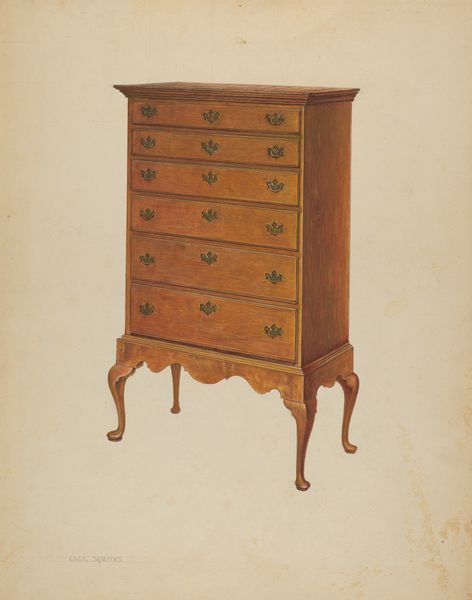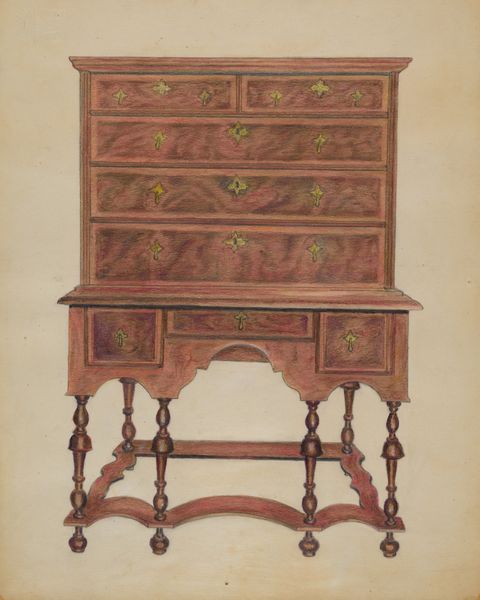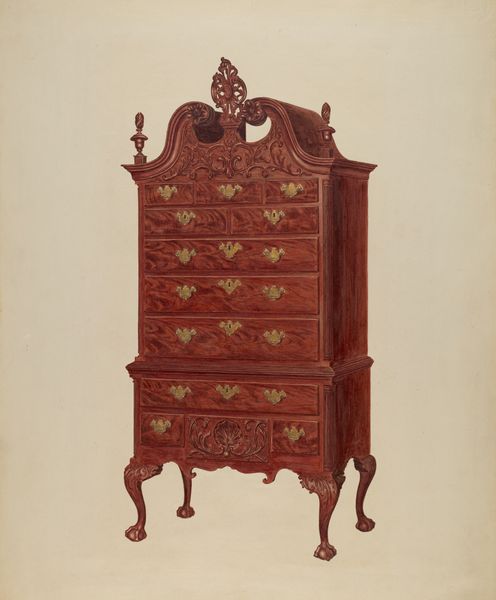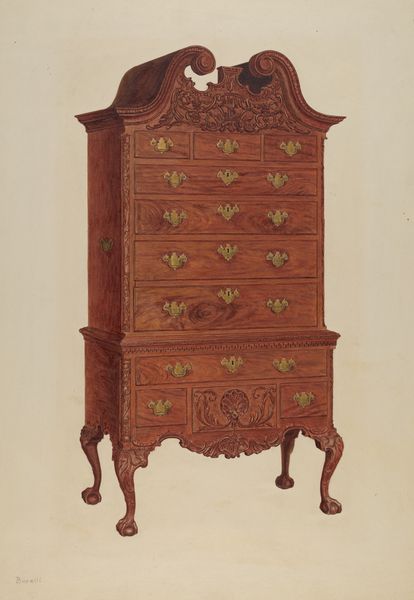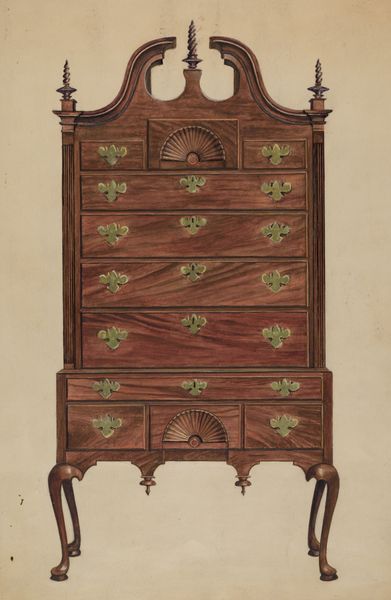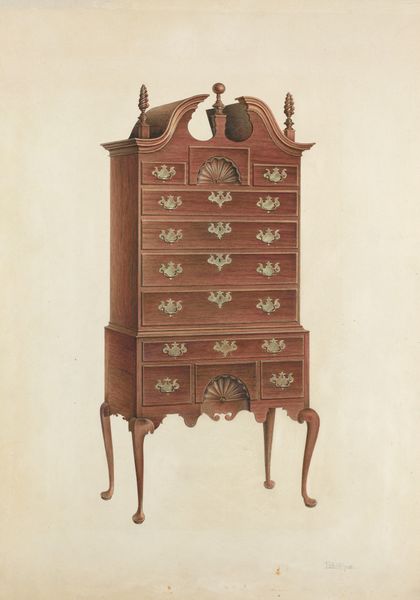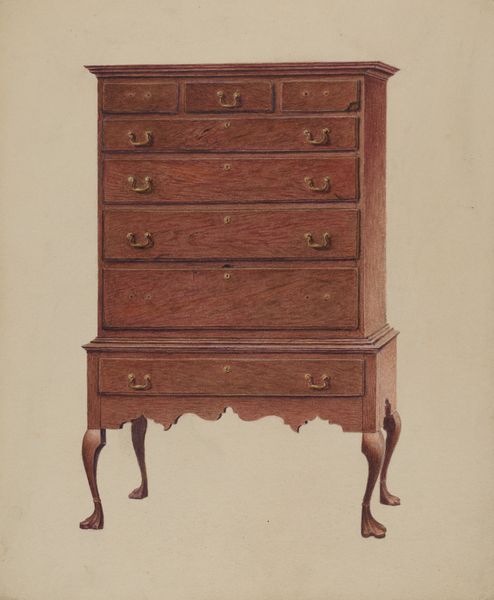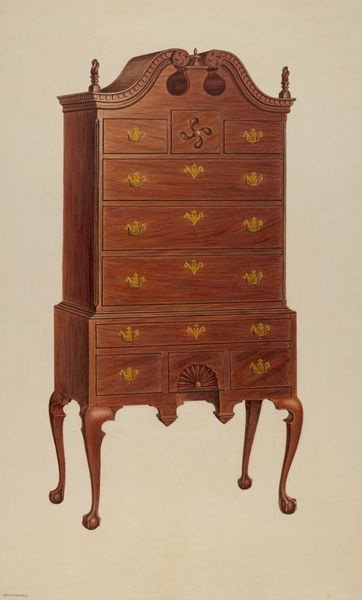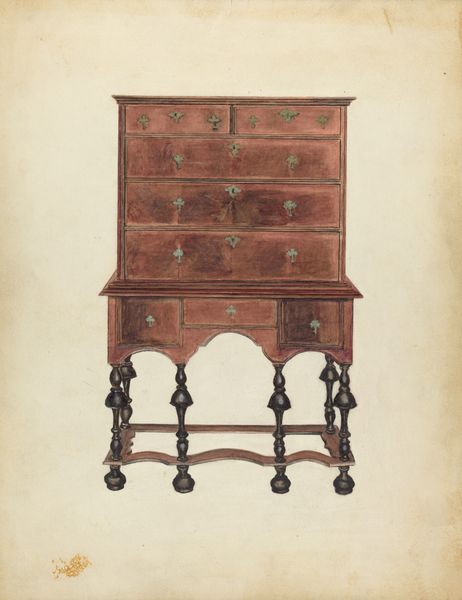
drawing, watercolor
#
drawing
#
water colours
#
watercolor
#
watercolour illustration
#
academic-art
#
decorative-art
#
watercolor
Dimensions: overall: 35.8 x 24.8 cm (14 1/8 x 9 3/4 in.) Original IAD Object: 62"high; 41"wide; upper section 31"high
Copyright: National Gallery of Art: CC0 1.0
Editor: This is Harry Eisman's "Highboy," a watercolor drawing from around 1936. It depicts a beautiful piece of furniture, but there's something unsettling about seeing it divorced from its function, almost like a relic. What do you see in this piece, particularly in its context? Curator: The “Highboy,” rendered in watercolor, presents a fascinating tension. While seemingly a straightforward depiction of decorative art, its existence as a drawing raises critical questions about access and representation. Who had access to such fine furniture in 1936, during the Depression era? The object signifies a certain level of wealth and status, but its representation through drawing allows for a broader, albeit mediated, engagement. Consider, too, the labor involved in crafting the actual highboy, likely by skilled artisans whose names are now lost to history. Editor: That’s a great point! I was focusing on its aesthetic qualities, but not thinking about the socio-economic implications of owning such a piece, especially then. Curator: Precisely! We need to consider not just the visual, but the material realities and social hierarchies embedded within seemingly "simple" objects. Who benefits from its existence, both then and now? How does it uphold or challenge existing power structures? Looking at the form, can we analyze the colonial origins that facilitated the supply and demand of such intricate commodities? Editor: So, even a seemingly innocent drawing of a chest of drawers can become a starting point for understanding larger social and political dynamics. Curator: Absolutely! By questioning the object's historical and social context, we unlock a deeper understanding of its significance, challenging us to consider who is included and, more importantly, who is excluded from the narratives of art and design. We might also examine how gender roles intersected with furniture like this - who used it, what types of objects might have been stored inside. Editor: I never thought of it that way. I’ll definitely be thinking more critically about context now.
Comments
No comments
Be the first to comment and join the conversation on the ultimate creative platform.
